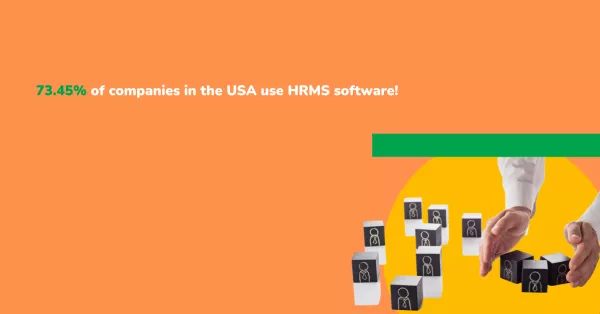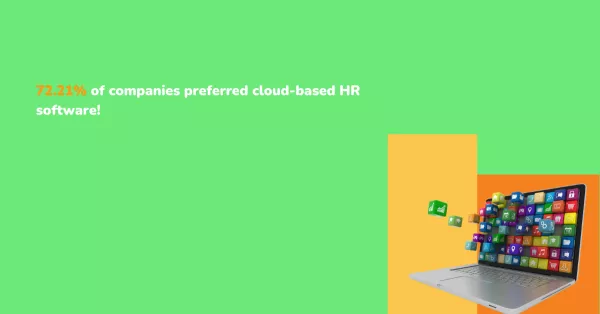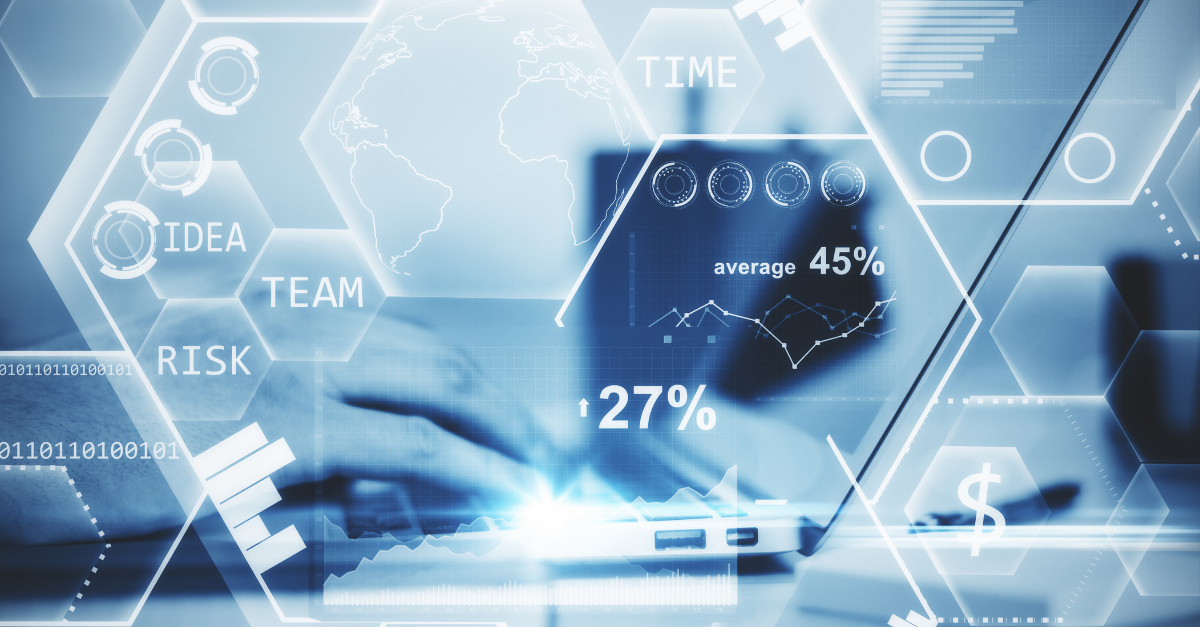Managing your workforce today is far more intricate than it was just a few years ago. You're no longer just keeping track of employee hours or managing leave requests, you’re expected to cultivate employee engagement, align individual performance with company goals, ensure compliance, and respond to evolving employee expectations, all while maintaining efficiency across departments. Whether you're overseeing a handful of team members or hundreds, this growing complexity has pushed traditional management methods to their limits.
Modern organizations operate in fast-paced, often distributed environments. The rise of remote and flexible work models has fundamentally reshaped how you interact with your teams. Meanwhile, the constant influx of data related to attendance, productivity, performance, and career development adds to the noise. It’s not just about having access to information anymore, it’s about managing it in a way that supports smarter, faster, and more strategic decision-making.
At the same time, employees themselves have become more aware of the experience they expect from their workplaces. They seek clarity in their roles, timely feedback, fair recognition, and opportunities to grow. Meeting these needs effectively requires more than intuition or fragmented spreadsheets. You need a streamlined way to manage people operations, one that consolidates data, enhances visibility, and enables informed action.
As workforce expectations and operational demands intensify, the need for scalable, agile, and data-informed tools becomes essential. That’s where the idea of a centralized, digital solution comes into play. You may have already considered switching to a more systematized approach, or perhaps you’re just starting to feel the strain of managing things manually. Either way, recognizing the increasing complexity of people management is the first step toward improving it.
Defining Employee Management Software
When you're trying to understand how to manage your team more efficiently, it's important to first clarify what a digital solution in this space actually offers. At its core, employee management software is a centralized platform designed to streamline and automate the day-to-day tasks involved in managing your workforce. But its role goes far beyond basic task execution. It serves as the framework that supports more structured, transparent, and data-driven people operations across your organization.
This type of software is built to integrate multiple HR functions into a single interface. That means instead of relying on scattered documents, disconnected tools, or manual processes, you gain one unified view of your employee-related data. From hiring to performance management, attendance to compliance, everything is managed in one place, allowing you to make faster and more accurate decisions.
You may come across various terms while researching, like employee management system, human resource management system, or HRMS. These are often used interchangeably, and while each may have its unique nuances, the common goal is the same: to simplify workforce administration and enhance overall organizational productivity.
Understanding what these systems encompass is essential before choosing the right one. With clear terminology and a better grasp of their capabilities, you're in a stronger position to evaluate how such a solution fits your needs.
Core Features of a Good Employee Management System

As you evaluate your options, understanding what to look for in a comprehensive solution is essential. A strong employee management system offers more than just a digital record of your team, it provides the structure and intelligence to streamline, automate, and improve every phase of the employee lifecycle. While platforms may vary in layout and approach, the best ones share a core set of features that are designed to support your day-to-day operations while giving you the insights needed for long-term planning.
At the heart of any effective platform is centralized employee data management. You should be able to store, access, and update everything from personal information to job roles, salary history, certifications, and emergency contacts, all from a single interface. This eliminates the fragmentation that slows down workflows and reduces the likelihood of errors in your employee database.
Another essential feature is time and attendance tracking. Accurate records of work hours, shift patterns, and absences help you stay compliant and keep payroll processes smooth. Whether your team works in-office, remotely, or in the field, the ability to monitor attendance in real time supports more informed decisions around scheduling, resource planning, and productivity.
Integrated leave and PTO management tools are also crucial. You want a system that allows employees to submit requests easily and lets you approve or decline them with visibility into team-wide availability. Automation here saves time and ensures consistency in how leave policies are applied.
A good employee performance management software component is another key feature to consider. Built-in performance tracking helps you monitor progress against individual and team goals, facilitate regular reviews, and ensure feedback is ongoing, not just annual. When this capability is part of your broader system, it helps you better align performance with development plans, promotions, and rewards.
Beyond that, the right solution should include robust reporting and analytics. You need access to real-time data that helps you spot patterns, identify issues early, and plan proactively. Whether you're reviewing turnover rates or engagement metrics, the ability to pull customized reports ensures your decisions are grounded in facts, not assumptions.
Mobile access is increasingly important, especially if your team is frequently on the move. An employee management app allows both managers and employees to interact with the system from anywhere, approving leave, clocking in, or reviewing performance updates on the go.
All of these features combine to create a system that isn’t just functional, it’s strategic. When you implement a platform with the right capabilities, you’re not just managing people more efficiently; you’re giving yourself the tools to support a more engaged, productive, and aligned workforce.
Why Your Business Needs Employee Management Software
If you're still relying on spreadsheets, disjointed tools, or manual processes to oversee your workforce, you're likely encountering friction that slows you down. From administrative overload to inconsistent data and communication gaps, these inefficiencies compound over time, affecting not only how your team operates but also how your organization performs.
By adopting a well-designed human resource management system, you gain more than just convenience. You position your business to be proactive rather than reactive. With all employee data housed in one system, you no longer have to chase down files, cross-check records, or spend hours on repetitive tasks. Instead, you’re freed up to focus on strategy, engagement, and growth.
Accurate and up-to-date data is essential for making informed decisions. Whether you're preparing for audits, analyzing headcount, or planning future hires, having reliable information at your fingertips removes guesswork. A centralized platform enables you to generate custom reports quickly, empowering you with insights that shape better outcomes across departments.
Productivity is another major benefit. With automated workflows, self-service portals, and digital forms, your team can complete tasks faster and with fewer errors. Routine HR tasks, like approving time off, updating personal details, or tracking training progress, become streamlined. This gives you more time to invest in areas that truly drive value, such as performance improvement, talent development, or policy refinement.
You also reduce the risk of compliance issues. A system that tracks certifications, monitors leave balances, and flags incomplete documentation helps ensure you're meeting legal and regulatory standards. This is especially valuable as labor laws evolve and your business scales.
If performance management is an area of concern, integrating employee performance management software into your daily operations makes a significant difference. You can facilitate continuous feedback, set clear objectives, and maintain visibility into progress, without relying on ad hoc updates or irregular evaluations. When done well, performance management becomes less of a chore and more of a strategic tool for growth.
Even the user experience improves. With the availability of a modern employee management app, you empower employees to engage with their own data, request time off, or check in on goals, all from their mobile devices. This adds flexibility to your workplace and reduces the administrative burden on your HR team.
Ultimately, investing in a unified platform isn’t just about solving today’s problems. It’s about future-proofing your operations, supporting your team more effectively, and ensuring your organization can grow with confidence.
Employee Management Software vs. Traditional HR Methods
As you assess how to optimize your workforce operations, one of the most important comparisons you'll need to make is between modern digital solutions and traditional HR approaches. While manual methods might seem familiar and low-cost on the surface, they often come with hidden inefficiencies, inconsistencies, and limitations that grow more problematic as your organization expands.
Traditional HR methods typically involve a mix of paper files, spreadsheets, email threads, and siloed tools. This fragmented system can quickly become overwhelming. Retrieving employee records, tracking performance data, or even responding to leave requests becomes time-consuming. The result is an increased likelihood of errors, miscommunication, and duplicated efforts, all of which drain your productivity.
By contrast, a well-integrated HRMS brings everything together into a centralized platform. You no longer need to jump between tools or rely on disconnected data points to make decisions. Everything from attendance logs to performance history is available in real time, giving you the visibility you need to lead with confidence and clarity.
Another key difference lies in automation. Traditional processes often rely heavily on manual inputs, which increases administrative workload and leaves room for mistakes. A digital system automates routine tasks such as approvals, reminders, document generation, and reporting. This reduces your operational burden and ensures consistency in how information is processed and stored.
Security and compliance also pose major risks in manual environments. When documents are stored physically or across unsecured digital files, the chances of data breaches or compliance lapses rise significantly. A secure employee management system provides role-based access, data encryption, and audit trails to help protect sensitive information and keep you aligned with regulatory requirements.
Modern platforms also facilitate better communication. Instead of relying on scattered email chains or verbal updates, your team can use built-in messaging features, notifications, and dashboards to stay connected. This improves transparency and helps everyone stay on the same page.
Ultimately, the gap between traditional HR methods and today’s digital alternatives is widening. If you're still relying on outdated tools, you're limiting your ability to scale, adapt, and lead effectively. Transitioning to a modern solution allows you to operate with greater efficiency, reduce risk, and create a more connected experience for both managers and employees.
How to Choose the Right Employee Management Tool

When you're ready to upgrade how you manage your workforce, selecting the right solution becomes a critical decision. With so many platforms available, it's easy to feel overwhelmed. But by focusing on key evaluation areas, you can narrow down your options and choose a system that aligns with your goals, scales with your growth, and delivers long-term value.
Start by identifying your core needs. Ask yourself what challenges you’re currently facing, whether it's inefficient workflows, a lack of visibility, disorganized data, or inconsistent performance reviews. Clarifying your priorities helps you filter out platforms that may be too complex, too basic, or not fit for your structure.
Scalability should be high on your checklist. You want a system that grows with you, not one that needs to be replaced in a year. The best employee management software adapts to your changing team size, supports new departments, and evolves alongside your processes without requiring major overhauls.
Ease of use is equally important. A tool might be powerful on paper, but if it's not intuitive, your team won’t fully adopt it. Look for a clean interface, logical navigation, and a minimal learning curve. Your managers, HR staff, and employees should all be able to use it without frustration.
You should also consider integration capabilities. Your system needs to work seamlessly with other tools you're already using, whether it's payroll software, communication platforms, or scheduling apps. Smooth integration eliminates data silos and helps create a unified experience across the organization.
Performance tracking features matter, too. A tool with a strong employee performance management software component allows you to set goals, gather feedback, and generate insights from regular reviews. If performance is a strategic priority, these features should be non-negotiable.
Don’t overlook mobility. A good employee management app makes it easy for employees and managers to stay connected with the platform from anywhere. Whether it's checking schedules, submitting requests, or viewing updates, mobile access supports flexibility and engagement.
Finally, evaluate vendor support and onboarding resources. Even the best tools can fall short if you don’t receive proper guidance during setup or help when issues arise. Look for a provider that offers responsive support, detailed documentation, and training materials to ensure a smooth implementation.
Choosing the right platform isn’t about picking the most popular product, it’s about selecting the one that empowers you to manage your team more effectively, efficiently, and strategically.
Why OrangeHRM?
OrangeHRM is an all-in-one HRMS built to help you manage your workforce with greater control, clarity, and confidence. Whether you're looking to streamline daily operations, improve visibility across teams, or strengthen your overall people strategy, we offer the flexibility and support to grow with your business. Designed to simplify complexity, it brings everything together in one unified platform, empowering you to focus more on people and less on process. Book a FREE demo today and see how OrangeHRM can transform the way you manage your team.
